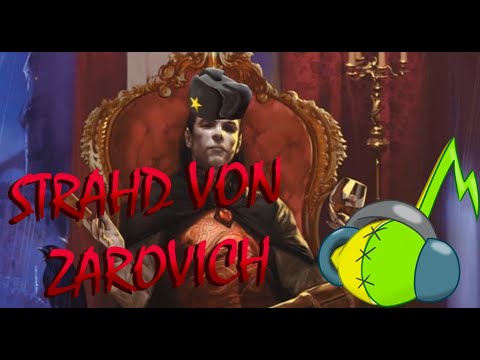Zagorath
Formerly /u/Zagorath on the alien site.
- 24 Posts
- 283 Comments

 8412·6 months ago
8412·6 months agoI just want to draw an important distinction between the Russian government, military leadership, & voluntary/willing soldiery and the average Russian citizen. It would be wrong to call the latter “the bad guys”, but not the former.

 681·6 months ago
681·6 months agoThat is what thinking of the children really looks like.
Lol sorry, but no. Korean educational culture is absolutely not about “thinking of the children”. It is completely normal in Korea for kids to go to their regular school, then go to multiple hours of hagwon, and then have their homework and study to do. Being severely sleep-deprived is very common.
Then there’s the stress caused by these exams. Yeah they do all those things to help give students the maximum ability to focus, but that’s only necessary because of how much pressure is riding on the results of these exams. University placements are even more important in Korea than they are in America, which from my perspective seems to itself have far more significance than which university you go to here in Australia.

 51·7 months ago
51·7 months agoGo back and reread the comment that you just replied to. Because nothing at here is even remotely related to it.

 102·7 months ago
102·7 months agoIt’s not about the dictionary definition of the term. It’s about the subconscious effect your choice of language has on how people think about things. When you call something an accident it gives people the signal that there was nothing that could have been done, and so nothing does get done. There’s no pressure on politicians and engineers in most of the anglosphere to do any of the things that would actually improve road safety. Indeed, a lot of the time when they do try to make our roads safer, you see fearmongering and NIMBY opposition against the idea.
Changing the language is one small step in helping to make our roads safer by making it clearer that making them safer is something we need to be concentrating on.

 51·7 months ago
51·7 months agoI’ve actually never seen the movie. I just know that it’s a widespread view among people who focus on road safety.
Most news articles I can find dealing with this issue, like this one seem to focus mostly on the idea that one driver may be mostly at fault. Which is true and definitely part of the equation, but personally I’m even more focused on the ways in which the road design itself may have been a contributing factor. When you have high speed roads that also have a large number of driveways and side streets (i.e., a “stroad”), higher numbers of crashes are inevitable, and can be avoided by better design. Same with when you create bike lanes with no separation, or separated but giving cars high speed ways to turn across them at intersections. The design of that street is a significant contributing factor, and calling crashes an “accident” lets the designers and the politicians who signed off on it off the hook.

 11812·7 months ago
11812·7 months agoA friendly reminder that road safety advocates recommend against the use of the word “accident” to describe car crashes, because it downplays the fact that many crashes are preventable, either by better safe road design or by the drivers being more responsible with with 2 tonne machinery they are operating.
They literally compared French people to dogs…
Just want to point out that draconic has quite a lot of words already defined, as well as a few grammar rules. 1. Draconic, 2. Draconic Primer, and 3. Lonely Planet Vayemniri (vayemniri being the endonym for dragonborn in the Realms—a race that absolutely despises dragons wouldn’t exactly be happy about a name that says “dragon”).
I’m not sure what real-world language would be the best analogue. Maybe something Germanic?

 111·7 months ago
111·7 months agoI’m 90% sure they were joking…

 91·7 months ago
91·7 months agoYesterday the same quote was posted, but instead of “on civilians” it was “killing Christians” (or something like that).

 307·7 months ago
307·7 months agoYou’d expect Jewish people to do the same, and yet here we are…
Ah, the classic “I need to go to the toilet” move.

 664·7 months ago
664·7 months agoThey didn’t. Only one of the cases was by jury, so it’s wrong to claim that “a jury found Google held a monopoly but Apple didn’t”.
And even if they were both jury trials, they’d be different juries, so it’s not like one group of people looked at all the facts and decided Google did the wrong thing and not Apple.
That’s in addition to the different facts in the case which this article is primarily about.

 1·7 months ago
1·7 months agoNo worries! If you didn’t already see it, I wrote a fairly lengthy review of the Evans novels in response to another user a few comments down in this thread.
Regarding Drizzt, my understanding is that “mixed things” is basically right. Some of the books are very well-liked, and others are not so much. My own personal experience is only that I’ve tried listening to the audiobook of The Companions, the Drizzt novel which is the first of The Sundering series. But I’ve ended up bouncing off of it twice, just not really caring about the characters.
I thought Reddit killed off gold earlier this year?
$2 is flat (apart from its rounded edges). $4 rises to a raised ridge in a line down the middle.

 1·7 months ago
1·7 months agoOh, I’ll just also add that she’s got two other books set in her own world that I know of. I think at least a third is planned. And next year the classic MMORPG RuneScape is releasing a book set in its world’s past written by her. I’ve not read any of these, but plan to.

 3·7 months ago
3·7 months agoEvans only has one standalone novel and one 6-book series.
The standalone: The God Catcher is set in Waterdeep, and is about the daughter of a minor noble who flunks out of wizard school and becomes a rogue, getting caught up in the scheme of some dragons who have found a way to bypass Waterdeep’s mythal and get into the city. It’s a fun ride.
The series is the Brimstone Angels series, about two twin tieflings abandoned at birth and adopted by a curmudgeonly single dad dragonborn. The prologue shows one of the twins accidentally forming a warlock pact with a devil. The biggest ongoing appeals of this series are:
- the nature of an infernal warlock pact and the relation between the warlock and patron
- the experience of a race that internally is absolutely no different to humans (unlike, say, half-orcs, which are canonically actually more likely to be aggressive) but which are perceived as evil
- the politics of the Nine Hells (her patron becomes, especially as the series goes on, a sort of deuteragonist of the series, and we see a lot of internal political dealings, schemes, etc. between different devils of different ranks)
If you’ve read the 5e Player’s Handbook, the quotes that are at the start of the tiefling and dragonborn racial entries both come from this series. The tiefling one is part of the prologue of book 1 (Brimstone Angels) and the dragonborn one is—from memory—from book 5 (Ashes of the Tyrant). The last two books are especially good if you’re interested in dragonborn, or if you like creative fantasy world building in general, because Evans’ background before she got into writing was in anthropology, and the dragonborn culture was not very heavily fleshed out previously, so she had a lot of leeway to do some really cool unique work with them. She’s got a number of articles on her blog about draconic language and dragonborn culture as sort of fun supplemental material. Here’s part 1 of “playing a Dragonborn in the Forgotten Realms”. There are also parts 2 and 3 of that series, plus 2 posts of the draconic language.
Book 4 is set in Cormyr, and deals a lot with Cormyrian politics. The closest parallel to which in more popular fantasy that I can think of is Wheel of Time’s Andoran succession crisis
Book 3 was explicitly part of WotC’s The Sundering, a series of books set around the time of the Second Sundering, the in-world explanation for the rule and setting changes between 4th and 5th edition. But Evans was allowed to set all of her remaining books 3–6 during the intermediary period, so book 6 climaxes basically right as the Sundering itself is hitting the world, which plays into her story threads in a major way.
There’s stuff about how Asmodeus came to be a god, how tieflings came to look like they do in 4th and 5th edition, how Azuth returned to life after being presumed dead, and a brief excursion to Toril’s twin plane of Abeir, the magic-less land ruled by dragon tyrants from which the dragonborn escaped.
There’s one other of her blog posts that I’d like to recommend, but I’m putting it down here because it’s a little different. It’s less a lore thing and more something interesting in the writing. Good if you want interesting ideas for narrating at a table, maybe, but mostly interesting if you’re interested in hearing about the writing process. If you’re the kind of person who enjoys seeing the “behind-the-scenes” of movies and the like. It’s this one where she’s talking about how she weaves in a game mechanic into the narrative in a seamless but necessary way. Specifically, how she used a 4e “healing surge” in the first book, a mechanic that was often derided by people who didn’t like 4e because of how unrealistic it was, but which she utilised in a way that was both flawless and entirely necessary (because the character doing it had used an ability that required they be below half health, and then later in the same scene used one that required they be above half health, to be faithful to the game rules).
But yeah, it’s safe to say that I’m a huge fan, and highly recommend her. Unfortunately if audiobook is not an option, book is the only way to get the first Brimstone Angels book, unless you’re lucky enough to have a library with it. But at least when I was buying 6 or so years ago, all the other books in the series were easy to get a hold of.

 2·7 months ago
2·7 months agoI’ve really struggled with the first of Evans’ Brimstone Angels series for a long time, too. The rest of the series was easy to come by, but the first one goes for over $100 second hand.
My local library had it for a while, but seems to have gotten rid of it. Thankfully, all Evans’ books are excellently narrated in audiobook, and are also available in ebook (including easily pirated, which I don’t feel too bad about considering I’ve bought the physical copy of all but the first, as well as the audiobooks of all of them).
I would guess the same should be true of Cunningham’s works, though I haven’t looked. (And the quality of the audio narration may not be as excellent. I know the narrator of the small number of Greenwood books I read was less than stellar.)












Bruh, remember that time 110% of Russians voted for Putin?
But anyway, in my grandparental comment, I phrased it specifically to not blame anyone who did support Putin as long as they’re not actively engaged in the military. If they’re not causing direct harm, I’m not going to blame people for falling for Russian state propaganda.